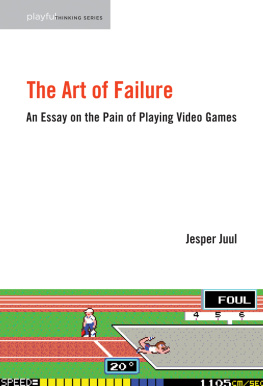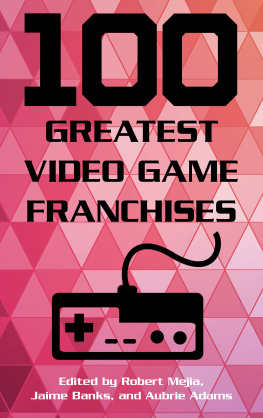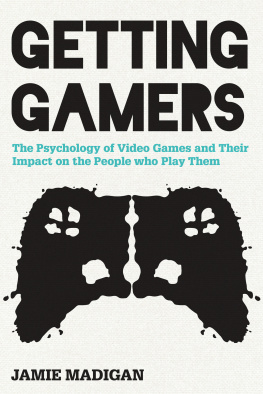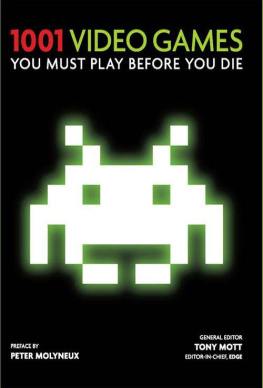DEDICATION
For the sparrows and pigeons of Wellington

TOMB-RAIDER
At the age of four I entered an ancient tomb, set on discovering the fabulous treasure hidden in its depths. I now know that tomb-raiding is questionable, ethically speaking, but back then I didnt care. My parents had brought home an Apple IIe, one of the first personal computers available in New Zealand, and with it came a game called Aztec .
I cannot recall much about my early childhood, but Aztec has stayed with me. I remember battles with cobras, lions, and even an octopus. I had to look up the games list of creatures just now to make sure I was remembering right. An octopus in an Aztec tomb? But yes, it was there. There were Aztecs too, of course, and they werent happy with me at all.
Aztec was an intense experience for a small child, but what really appealed to me then, and still appeals to me now, is that the game let me be someone else somewhere else. Suddenly I was a tomb-raider, planting dynamite, shooting snakes, and evading that most cinematic of traps, the ever-lowering ceiling. It may not surprise you that almost three decades later I still play video games a lot of video games. I play every day. I play on my Xbox 360, my laptop, my iPod. I play at home, I play on the bus, and I play on the way to work.
Oh yeah, I also play video games because its my job. I teach video game design at a university in Copenhagen. The place where I work is called the Center for Computer Games Research. No kidding. In a spectacular building of air and glass I work with some of the people who are the smartest in the world when it comes to studying what video games are, what they mean, and what they could be in the future. Its a surreal and wonderful experience seeing a bunch of the best and brightest sitting around the lunchroom talking about the finer points of World of Warcraft or their best score in the latest iPhone game.
When Im not teaching about video games I spend most of my time thinking about them and making them. My latest effort is a recreation of a performance artwork, The Artist Is Present, by Marina Abramovic. In the original work, performed at New Yorks Museum of Modern Art, visitors could, one by one, sit across from Abramovic and silently look into her eyes for as long as they pleased. In my game version you can replicate this experience. The museum is open only when the real one is 10:30 a.m. to 5:30 p.m. New York time and closed on Tuesdays, Thanksgiving and Christmas. As in the real artwork, a lot of people want to see Abramovic so you have to wait in line. When I played recently it took me five hours to get to the front of the queue.
The game caused a modest sensation on the internet. In one week it had over 90,000 visits, was featured by such publications as The Village Voice and The Huffington Post , and mentioned on Twitter by the Museum of Modern Art and Pariss Pompidou Centre.
So to recap, my days consist of playing games, talking about games, teaching games, thinking about games, writing about games, and making games. Terrible, I know. How did I get here?
From Aztec on, games became a normal part of my life. They were just there, neither central nor peripheral but merely something I did, like reading, or watching movies, or playing cricket with a tennis ball at the local schoolyard. For me and my friends they provided an important separate sphere of life where we were in control, and not just of the characters in the games but of the experience itself, from the technology to the new situations in which it placed us.
I vividly recall the intensity of the social rituals surrounding the games. These rituals were a part of our growing adulthood. After stepping through a wall of heat and jangling sounds at a local arcade, we entered a domain where we could come into our own. We changed our money at the counter into glorious five-high stacks of twenty cent pieces, walked thoughtfully around the room looking at the cabinets, each its own world, or perhaps rushed immediately to a favourite game, thumb and index finger warming our first coins with a rhythmic rubbing. If you wanted to play a game with someone, who would usually be a complete stranger, you observed the ritual of placing your coins at the base of the screen, indicating you would join in at the next opportunity, either to compete or collaborate.
One of my fondest memories is of going with my best friend Kris to a local video store to rent a Sega Mega Drive for the night. Even the word rent felt like a medal of maturity. We walked the stores aisles, making the weighty decision as to which three games we would play. Old favourites such as Golden Axe ? Perhaps that weird-looking new one enticingly called ToeJam & Earl ? Taking our selections to the counter wed receive the cartridges and game system in a special nylon bag that bristled with Velcro straps to hold everything in place. Masters of technology, we would return to Kriss house, eat fish and chips, and play late into the night, sometimes swapping the controls back and forth, sometimes playing together as a team. When we finally went to bed thered be dents in our thumbs from pressing the buttons with so much passion. Next morning wed get up early to play for the last few hours before the games had to go back to the shop.
Around the time I started going to high school, I developed a more unusual passion: I became a fan of American football. Specifically, I became a fan of the Dallas Cowboys. This started almost completely at random: I saw some NFL scores on my grandmothers TV and decided there and then this was my sport. And since the Cowboys had won their game, they were my team. While I enjoy cricket, rugby and other traditional New Zealand sports, I still bleed the silver and blue of the Dallas Cowboys. This has not been easy: other than their glory years in the early 90s, the Cowboys have been one of the most consistently disappointing teams in existence.
American football and video games became tightly intertwined. With the NFL not exactly a household name in New Zealand, I relied heavily on video games to get my football fix. The reigning champ was Madden NFL . At one point I bought the yearly edition every year for ten straight years. I still buy it, although lately Ive started missing every now and then.
The relationship between the real Dallas Cowboys and my video game version is complex. For one thing, in video game football you can rewrite history and imagine a glorious future. Could the Dallas Cowboys win this years Super Bowl? Why yes. And the next and the next? Yes. The Cowboys win! Even when the real Cowboys are suffering bitter defeat on television, I can change the channel and make them win big in Madden NFL .
This has, over time, led to some superstitious behaviour. I have become obsessed with playing a simulated version of the Cowboys next match in order to help them win the real game. I set up elaborate rules for these games to ensure theyre valid: no cheating, no cheap shots, no saved games, no restarting. I do my part for the team, playing in deadly earnest.
As video games became increasingly sophisticated, my relationship with them began to take on a more serious note. In 2001 numerous games altered my perception of what could be done in the medium. In Grand Theft Auto III I could exist in a city that was both my personal domain and yet pleasingly indifferent to my presence. It felt more authentic than any virtual world I had seen before. In ICO I caught myself getting genuinely emotional about the fate of my character and my role in shaping events. In Metal Gear Solid 2: Sons of Liberty I relished the deeply postmodern approach, complete with fake death screens and an odd fracturing of the fourth wall, taken by the designer, Hideo Kojima.
Next page

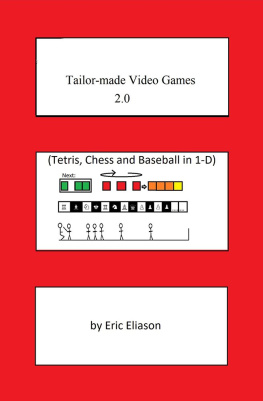
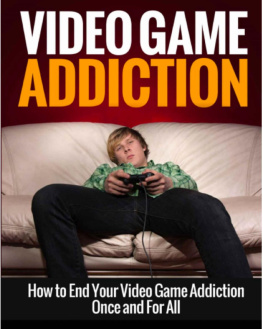

![Mark J. P. Wolf (editor) - Encyclopedia of Video Games: The Culture, Technology, and Art of Gaming [3 volumes]](/uploads/posts/book/279290/thumbs/mark-j-p-wolf-editor-encyclopedia-of-video.jpg)
